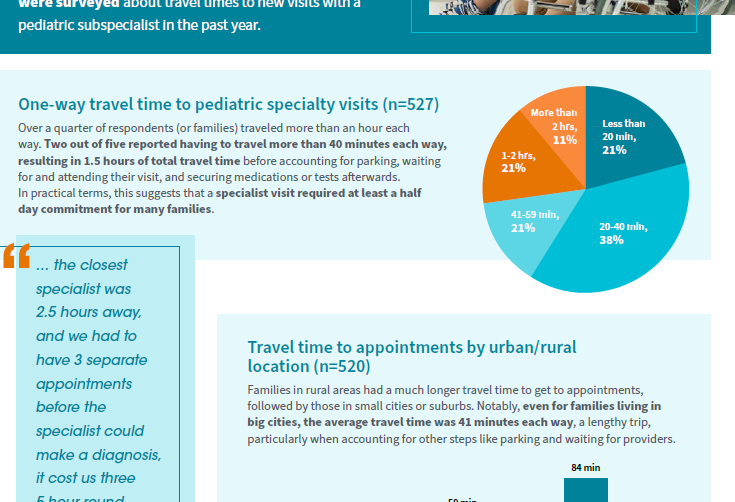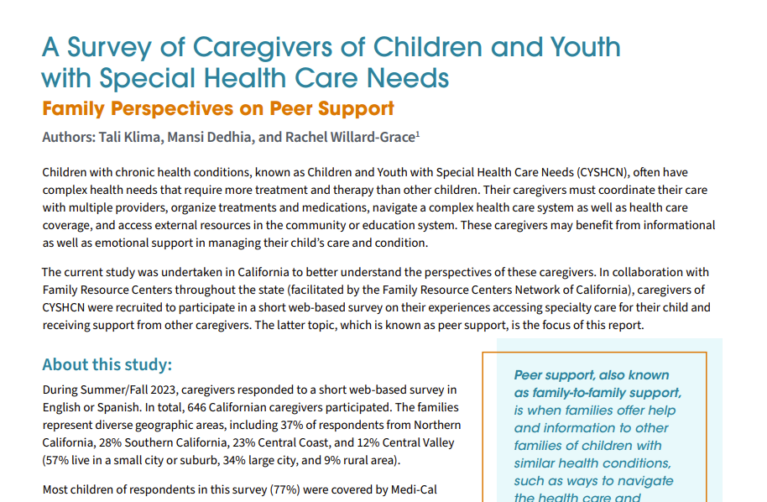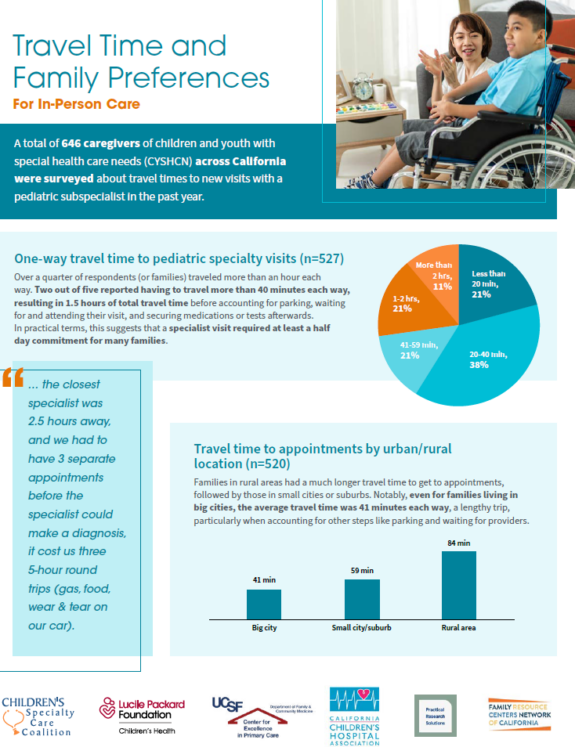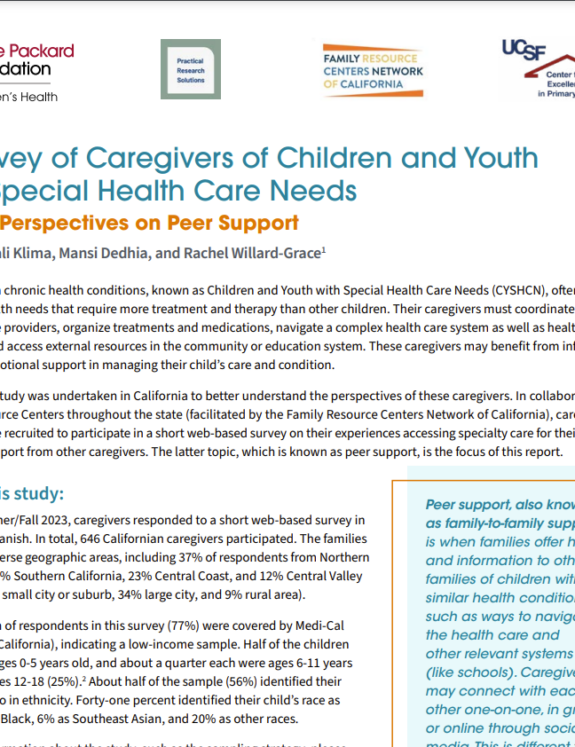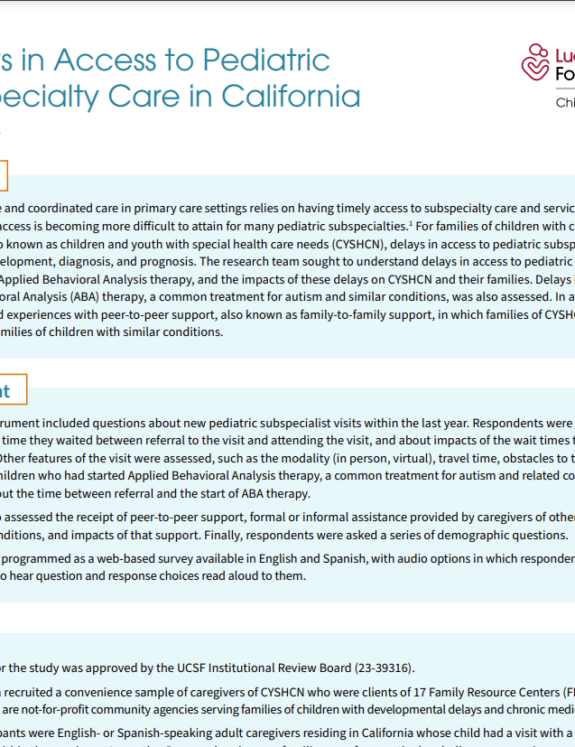Supply and Demand for Child and Adolescent Mental Health Services
Diagnosable behavioral and mental health problems affect approximately 20 percent of children in the US. These problems range from symptomatic responses to emotionally traumatic situational stress to severe depressive and psychotic disorders. The majority of these problems impair the functioning of children and their families, but they respond to treatment and usually are not so severe that they require chronic medication or long-term care by a mental health professional. Many of these situations may be amenable to prevention and early intervention services.
Difficulty accessing mental health services, especially for children and youth, is a well-recognized national problem. Access is primarily limited by a shortage of well-trained child and adolescent mental health professionals, which is related to the relatively long training period required to become a competent therapist. It is exacerbated by the low reimbursement levels available to mental health providers who offer time-intensive “cognitive services,” compared to other health care professionals who provide more procedure-oriented care. Failure of health plans to adhere to regulations requiring parity of mental health services with medical services also contributes. These are long-term problems on the supply side of the access equation, and are unlikely to be rectified in the near term. Efforts to recruit others with less mental health training to provide mental health services, e.g., primary child health care providers, is a partial solution but requires a supportive infrastructure of experts in child psychiatry and psychology.
The epidemiology and etiology of children’s behavioral and mental health problems suggest that a demand side approach offers a promising strategy to addressing access issues. Preventing the development or reducing the severity of child and adolescent emotional disorders hold great promise as cost-effective ways to reduce the demand for scarce services. Primary prevention involves helping children of all ages learn skills to recognize, cope with, and adapt to potentially challenging emotional and social experiences while learning to manage stress successfully. These tools may help youth avoid or reduce those experiences and circumstances that may adversely affect their well-being.
Secondary prevention involves identifying children who seem to be less successful at developing appropriate skills to cope with their lives’ stresses, and intervening to reduce those stresses and/or to help them and their parents understand their responses and modify them. Supporting families is a key aspect of each of these approaches, which require community-based, system-wide changes that extend beyond the realm of traditional physical and mental health care. It is important to understand that most emotional disorders are developed as children interact with their environment. All who shape that environment—parents, family, friends and neighbors, child care providers, teachers, community leaders, public officials, and others—have the opportunity to promote healthy child development. The large and rising proportion of children suffering from emotional disorders suggests that there is much opportunity to improve children’s lives and thus reduce the need for mental health services.
Edward L. Schor, MD, is senior vice president, Programs and Partnerships, at the Lucile Packard Foundation for Children’s Health.
Steven Adelsheim, MD, is clinical professor of psychiatry and behavioral sciences at the Stanford School of Medicine.
